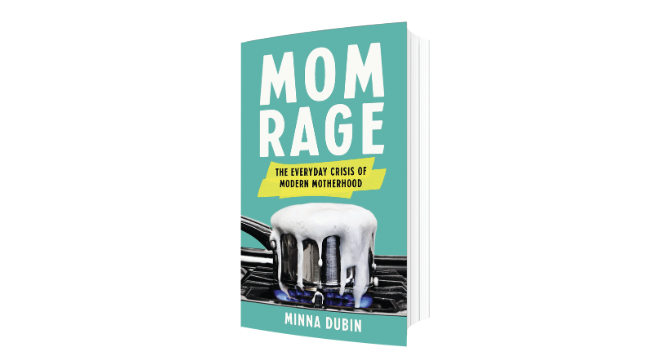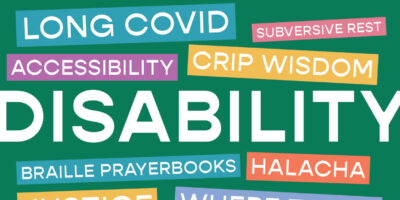
All the Rage
I grew up with people who revered the power of words. Life, if you believed their stories, ends up at a crossroads where the right words, delivered in exactly the right way, make the difference. The biggest of those big talkers spoke rage like a mother tongue. When they swelled up with anger, recounting some terrible injustice or avoidable tragedy, time flattened. Whoever that rage was set against, it was always justified. No other interpretation was possible. And so, when it was my turn to stand against their anger, I could only stutter out pathetic and half-baked rebuttals, or nod in agreement, a double agent against myself. I never stood a chance.
That kind of rage—the righteous anger of the very large directed, largely, at the very small—is the topic of a book I read recently, entitled Mom Rage: The Everyday Crisis of Modern Motherhood.
I should clarify that that is what I— with my childhood experience—find its subject to be. The author, Minna Dubin, assures the reader that “In this book, I talk about mom rage within a non-abuse framework. I urge all parents who feel out of control to seek support.” When we meet for an interview, Dubin—one of many recent feminist authors who have taken on both rage and motherhood—explains that her book is not meant to judge mothers or tell them what to do: “I very much did not want to write a ‘how to be a better mother’ book. … I am very allergic to self-help stuff.” So, as a book for the rager, not the raged-at, her work does not interrogate the effects rage has once it’s released.
Dubin coined the term “Mom Rage” in a New York Times article that went viral during Covid lockdown. The article gave voice to mothers who were, essentially, the operating system that society was running on during that time: supplementing and organizing remote school and running the household while simultaneously working, also remotely, full-time. I was working and mothering during that time, too. It was unsustainable, and yet we sustained it. No one came to save us.
The mothers in that New York Times article, including Dubin herself, confided that they were boiling with rage inside—and, increasingly, that rage was exploding outward at their partners and children. They were also wracked with guilt, over both the impulses and their aftermath.
In her book, Dubin explores what differentiates this rage from simple anger and frustration by delving into feminist history. Mothers have been at the mercy of society’s constantly shifting expectations of womanhood, encompassing discipline, breastfeeding, eldercare, and pretty much everything else. Until the 20th century, multigenerational households and extended family networks meant that most women tended to share the burdens amongst themselves. “Part of [Mom Rage] is that motherhood often feels isolated within our nuclear families,” Dubin says. The rise of the nuclear family meant that one woman was now personally responsible for all that work and responsibility, all those societal expectations. Advances in medicine, child psychology, and technology only add to the expectations.
As a result, Dubin writes, modern mothers are frustrated, overwhelmed, and under-resourced. They don’t get enough help from their partners. Without socially acceptable ways for mothers to express their frustration with mother- hood, she writes, they suffer in silence, beating themselves up for approaching parenting with anything but cheerful enthusiasm. With no outlet, and guilt a constant companion, they pile up small and large wounds and resentments in a part of the subconscious Dubin calls the Rage Basement.
Rage builds there, among cobwebbed traumas, until the right trigger comes along and the door bursts open. Mothers explode in a rage that seems sudden and disproportionate, and are judged for it. Then they feel crushing guilt for something not entirely their fault. They rage not just because their toddler broke a priceless heirloom, but because they have been stuffing a thousand smaller indignities into the Rage Basement, which might not have been necessary if they had a supportive partner or boss, more than two weeks of maternity leave, or free, reliable child care.
Towards Mom Rage’s peak, a mother (not Dubin) confesses memories of “‘holding [my daughter] and biting down on her fluffy onesie to staunch something worse.’” Another yanks her child by the shirt, eliciting a shocked yelp of pain. Dubin (implicitly) positions these impulses, checked and laden with guilt, as distinct from the kind of rage outside a “non-abuse framework” that sometimes warrants a call to Child Protective Services. The specter of CPS is frequently invoked here, not as a warning but as a way of signaling Dubin’s awareness of her privilege. Dubin states that, as a middle-class, educated, cis white woman, she has the freedom to safely describe raging at her children or throwing things at the walls, while, by contrast, if a Black mother were to disclose exactly the same situations, she would have to live in fear of being reported to CPS.
Dubin’s acknowledgements of her privilege and other mothers’ lack thereof are repeated until they feel like spitting to ward off the evil eye. I’m around Dubin’s age, and perhaps “I am aware of my privilege as a…” is our generation’s kineynhora, but I am aware of my lack of privilege as a Black woman and I found it grating. I assumed it signaled an eager- ness to prove that she had a newfound understanding of privilege. During our interview, visibly amused by my question, she informed me that she had actually been working on these issues long before 2020: “I’ve been obsessed with identity forever,” she confided.
These disclaimers undercut the book’s greatest strength: Dubin has, in fact, wrapped her personal story around lively vignettes and quotes based on interviews she conducted with other mothers who vary in terms of race, socioeconomic background, gender identity, and sexual orientation. “It felt really important to show [Mom Rage] is something that affects everyone by interviewing moms from all these different backgrounds,” she says of these glimpses of diverse households and mothering experiences.
I would have been happy with entire chapters devoted to these women, particularly since their Mom Rage manifests in diverse forms. Cheryl, one of the mothers who is quoted extensively, provides a particularly interesting counterpoint. Cheryl, who is Black, is a lawyer, wife, and mother, whose story of parenting a special needs child during remote school, remote work, and lockdown starts out as the perfect case study for Mom Rage. However, Cheryl describes her father as physically and verbally abusive. Having grown up in a household where rage was the norm, not the exception, and with a deep understanding of the effects of explosive anger, Cheryl makes the deliberate decision to hold her anger inside.
Cheryl doesn’t erupt at her son. Instead, she turns the cycle of abuse on herself by drinking and self-harming. I found it troubling that the index in the book Mom Rage features two mentions for “abuse”: the disclaimer at the beginning, and Cheryl’s story. Troubling, because the book doesn’t engage with Cheryl’s abuse, attempt to put it in any kind of larger context, or—crucially, in my opinion—explain what differentiates Cheryl’s childhood experience from that of any other child in the book.
Mom Rage encourages women to genuinely reconnect with their children, after raging, by giving children the space to express how their mother’s rage made them feel, then apologizing sincerely to them. Cheryl’s childhood story could disprove the assumption that a child’s “I forgive you” wipes away the aftereffects of rage, leaving a clean slate. Giving Cheryl the space to show us why what she experienced was abuse, and why what the moms in the book are doing is not, would have gone far to separate troubled but loving mothers from something more damaging. I kept thinking that people who wield their rage deliberately, to crush and wound, feel as justified in their rage as the moms Dubin writes about do. They issue grand non-apologies and wait, impatiently, for words of forgiveness so everyone can be forced to move on.
One of Dubin’s proposed solutions to conquer Mom Rage is for more women to speak out about it and to talk to other women who are suffering from it. Given that Dubin has talked so much about how women with less privilege than she has couldn’t have this conversation safely, I asked if she had thought about how women with less privilege could join this conversation safely. She referred back to a Rebecca Solnit quote that opens the book, illustrating how sharing one story can inspire other people to share theirs. “I want all moms to be able to talk about all their struggles, and I also want them to do what they need to do to protect themselves and their families.”
This book does create spaces like that; unfortunately, they get buried beneath the emphasis on rage. I’m not convinced that mothers are all suffering from rage, but I certainly finished the book feeling that mothers from a variety of walks of life are suffering. The quotes from these mothers were valuable; I only wish they had more space.
Sometimes, it’s more meaningful to know that other people like you are having a problem than it is to hear yet another solution. I would have benefited from reading Cheryl’s story in its fullness, but I was glad to meet her all the same. I thought her bravery in actually confronting and trying to defeat the after-effects of parental rage deserved its own book.
Marcella White Campbell is an essayist, journalist, and children’s book author exploring Jewish multicultural identity.




